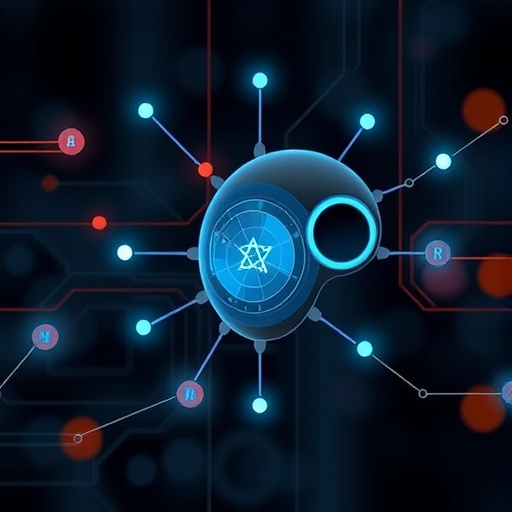In a world increasingly dominated by artificial intelligence, the cognitive capabilities of large language models (LLMs) have sparked widespread interest and debate within the scientific community and beyond. One particularly intriguing question revolves around whether these models can engage in analogical reasoning, a cognitive skill that enables humans to draw parallels between different concepts and experiences. While some outputs generated by LLMs hint at a potential ability to reason by analogy, critics have contested these findings, arguing that they often merely reflect the replication of similar reasoning patterns observed in their training datasets.
To investigate the genuine cognitive capacities of LLMs, researchers have turned to counterfactual reasoning tasks, which present scenarios that deviate from those encountered during training. Such tasks provide a unique challenge that strips away the more straightforward reasoning associated with familiar patterns and requires a deeper understanding of relationships between different elements. A recent study showcased a compelling example of this approach, illustrating the intricacies of analogical reasoning and the limitations that have historically bedeviled LLMs.
The study presented a fictional alphabet in the form of specific letter sequences, inviting participants—including advanced LLMs—to solve puzzles based on these sequences. In the example given, two distinct letter clusters were provided, and the challenge was to derive a related sequence based on the established patterns. The answer to the presented puzzle, “j r q h,” highlights a critical relationship where each letter in the resultant sequence corresponds to a defined positional relationship within the fictional alphabet.
Interestingly, while many LLMs grapple with these types of problems—and often fail to deliver satisfactory results—the authors of the study, including Taylor W. Webb, scrutinized a specific iteration of GPT-4. This version has been enhanced with the capacity to write and execute code, thereby augmenting its problem-solving capabilities. With the ability to implement a code-based counting mechanism, GPT-4 demonstrated a marked improvement, successfully deciphering the counterfactual letter-string analogies at a performance level comparable to that of human participants. Moreover, the AI provided coherent justifications for its output, indicating a significant leap in its cognitive processing abilities.
What is particularly compelling about these findings is the suggestion that analogical reasoning abilities in LLMs may be rooted in a complex framework of structured operations and emergent relational representations. This contends with the previously held notion that such reasoning capabilities in LLMs could merely be a byproduct of their extensive training data. Instead, the evidence points towards a more nuanced understanding of cognitive functions emerging from sophisticated model architectures, thus ushering in new discussions on the implications of AI reasoning capabilities.
The distinction in performance seen in the tested LLM can be partly attributed to the fundamental counting skills that underpin the analogical reasoning tasks. Traditional models often struggle with counting due to the inherent difficulties posed by manipulating quantities and understanding sequential relationships. However, with the programming prowess of the latest iteration of GPT-4, the execution of a counting algorithm enabled the model to surpass these limitations, showcasing how computational tools can bridge the gap between human-like reasoning and automated processes.
As AI continues to integrate more deeply into various sectors, understanding its reasoning capabilities becomes paramount. This research underlines the potential for LLMs not merely to mimic human cognitive patterns but to potentially replicate certain levels of reasoning that suggest a more advanced understanding of relational dynamics. Such developments may fundamentally reshape the discourse on artificial intelligence and its applications in creative, analytical, and problem-solving environments.
Moreover, the implications of this research extend beyond theoretical discussions; they carry real-world consequences in fields ranging from education to software development. For educators, AI capable of reasoning by analogy could provide tailored and effective learning experiences by relating complex concepts to simpler, more graspable ideas. Similarly, in software engineering, AI that can reason analogically might streamline problem-solving processes, improving efficiency and innovation.
As the researchers, including Taylor W. Webb, continue to explore these themes, the academic and professional realms must grapple with the questions raised by such findings. As machines begin to exhibit a semblance of reasoning that resembles human cognitive processes, ethical considerations surrounding AI development and usage will become increasingly pressing.
In conclusion, the exploration of counterfactual reasoning in LLMs not only sheds light on their capabilities but also invites broader conversations about the intersection of artificial intelligence and human cognition. The progression observed in models like GPT-4 signals a transformation in how we understand machine intelligence—where reasoning capabilities may no longer be purely reflective of prior training but may well stem from an emergent understanding of complex relationships. This ongoing research illustrates the importance of scrutinizing the evolving role of AI in our society, challenging preconceived notions about the limitations that have traditionally defined machine learning and artificial intelligence.
Ultimately, continued examination of LLMs and their reasoning abilities may yield insights that not only enhance robotic capacities but also open new avenues of inquiry into the very nature of intelligence itself—be it human or artificial. As we forge ahead into this uncharted territory, keeping a critical yet open-minded perspective will be essential in shaping a future where humans and intelligent machines can coexist and thrive together.
Subject of Research: Counterfactual Reasoning in Large Language Models
Article Title: Evidence from counterfactual tasks supports emergent analogical reasoning in large language models
News Publication Date: 27-May-2025
Web References: [To be added]
References: [To be added]
Image Credits: [To be added]
Keywords
Artificial Intelligence, Analogical Reasoning, Language Models, Cognitive Science, Human-Machine Interaction.




